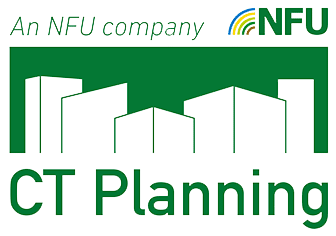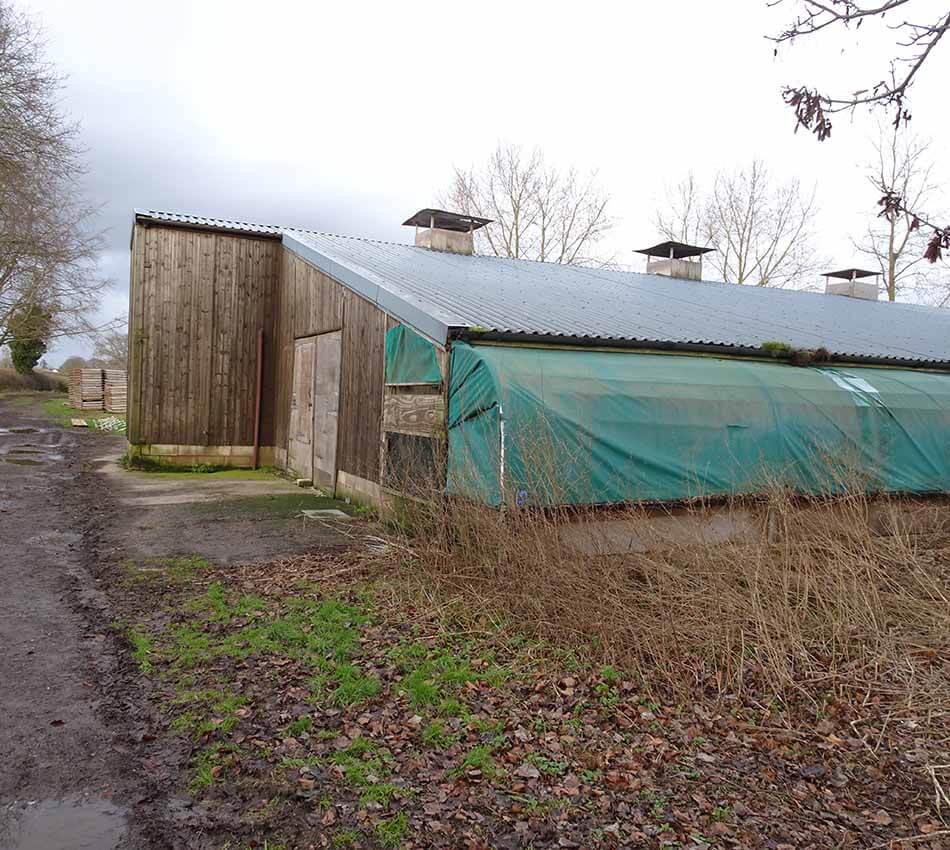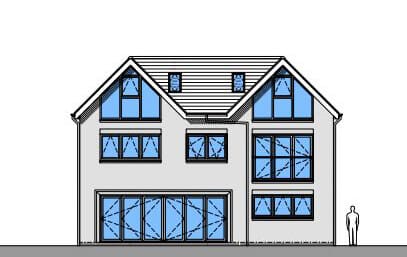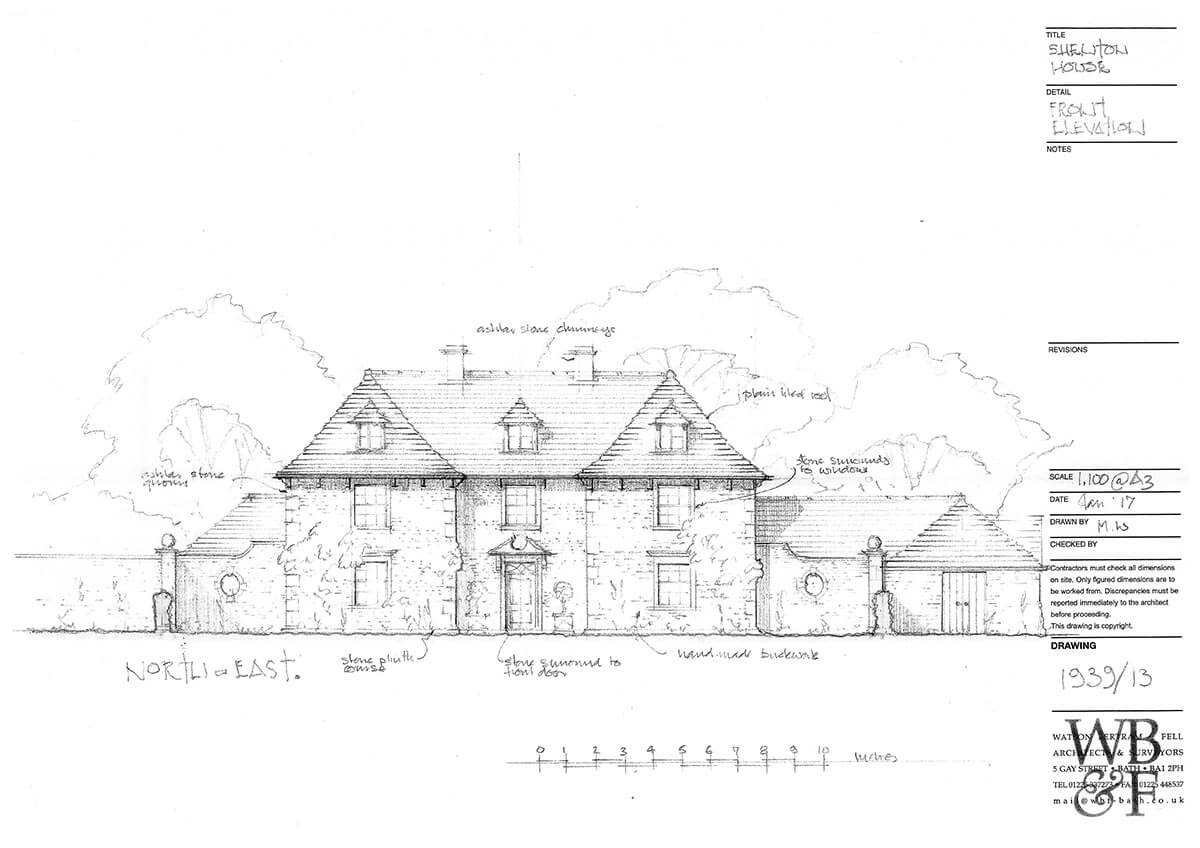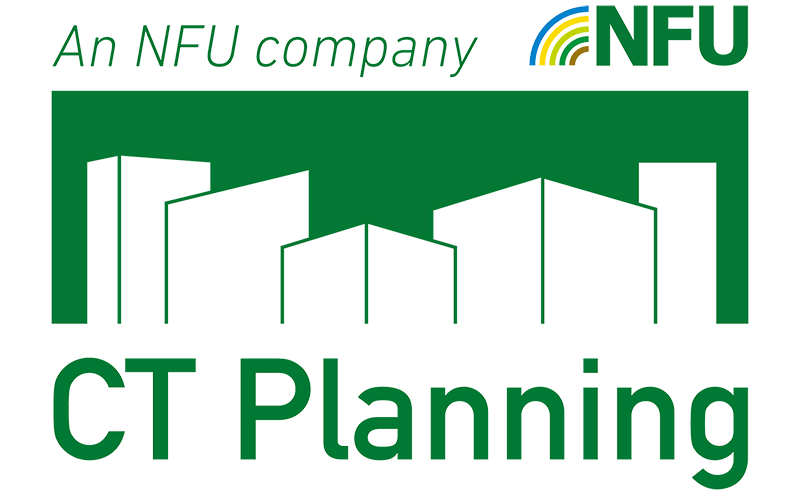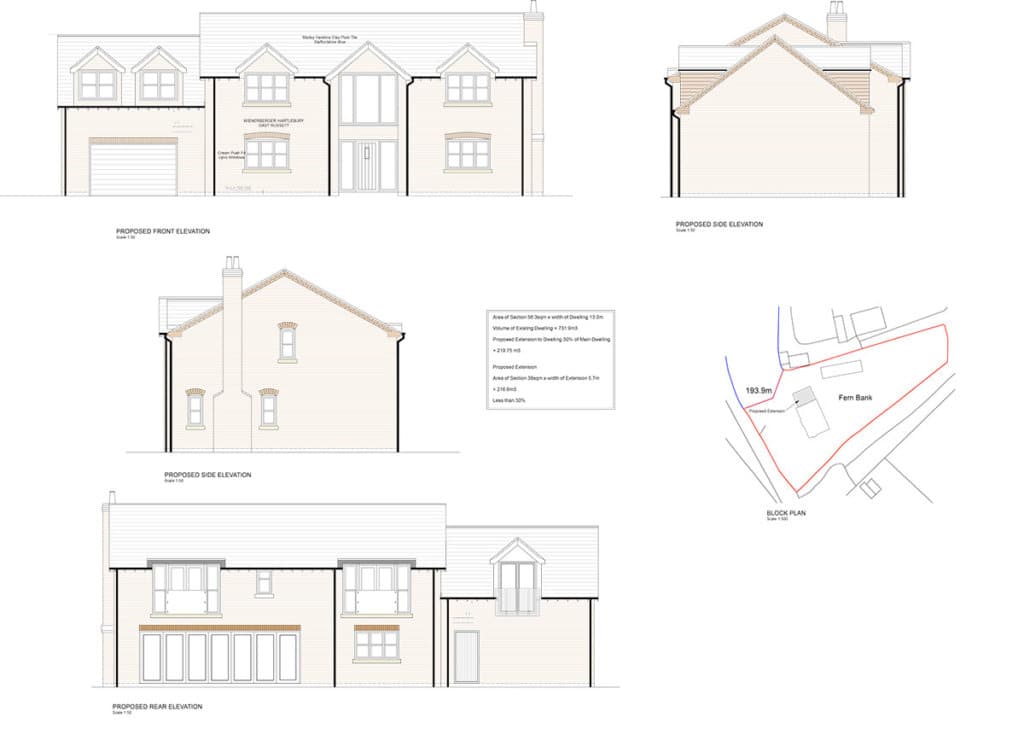
Planning Permission for a Replacement Dwelling
Category: Residential
Location: Staffordshire
National Planning Policy indicates that the erection of buildings, in Green Belt is inappropriate and only permissible under very special circumstances; this includes new dwellings. Similar policies often apply in rural areas outside of Green Belt, where new dwellings are only permitted where necessary in relation to a rural activity such as intensive livestock agriculture.
Given this situation, you may well have seen a new house in the countryside and wondered “how did they get planning permission for that?” The likelihood is that the dwelling has been either remodelled and extended or replaced.
This property in this case study is located within Green Belt and within the Cannock Chase National Landscape.
As is evident from the photograph below, the property was constructed during the late 20th century. It was not listed as being of special architectural or historic interest. It was not located in a Conservation Area. It was of no architectural significance; indeed, it could be argued that it was a bit of an eyesore and in need of a facelift.
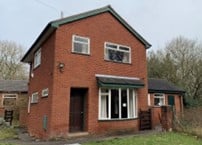
One of the limited number of exceptions to the presumption against new building in the Green Belt is where it relates to the extension or alteration of a building, provided it does not result in disproportionate additions over and above the size of the original building.
The property had not been previously extended. In August 2020, Planning permission was granted for a two-storey side extension to form a kitchen with an additional bedroom above. This extension increased the volume by some 30%.
Whilst the property is in Green Belt and the Cannock Chase National Landscape, it benefitted from permitted development rights allowing the property to be further extended. In November 2020 a Certificate of Lawfulness was obtained to demonstrate that the property could be extended by way of two additional single storey extensions as permitted development, that is, without the need for planning permission.
It became apparent to the owners of the property that although the consented extensions significantly increased the size of the property, it would have resulted in a property that was compromised in terms of its layout. Furthermore the resultant extended dwelling whist having the appearance of a new dwelling had none of the benefits of a new dwelling. A new dwelling could be built to 21st century Building regulations and hence would be well-insulated and more economic to heat. A new dwelling can be constructed free from VAT whereas extensions attract VAT. It soon became apparent that replacing the existing property with a new dwelling may be the best solution for the site.
National planning Policy states that the replacement of a building in Green Belt is appropriate provided that the new building is in the same use and not materially larger than the one it replaces. Put simply, it is possible to replace an existing dwelling in the Green Belt if it is no bigger in terms of its volume or height than the dwelling it replaces. There are often similar policies in local plans that allow for the replacement of dwellings outside of Green Belt but in a rural area.
It should be noted that not all dwellings will be suitable for being replaced. It is most unlikely that planning permission would be granted to replace any dwelling that was listed as being of special architectural or historic interest. Similarly, consent is unlikely to be granted if the dwelling is in a conservation area and is deemed to contribute to the character or appearance of the conservation area. Even where a dwelling is not listed or located in a conservation area, a local planning authority may deem the existing dwelling to be a heritage asset; this would reduce the likelihood of obtaining planning permission for a replacement dwelling. If you are contemplating replacing an existing dwelling it is advisable to seek the advice of a planning consultant such as CT Planning.
In June 2021, CT Planning secured Planning permission for the erection of a new dwellinghouse to replace the existing. The replacement dwelling had a volume slightly less than the dwelling to be replaced incorporating its permitted extensions. The replacement dwelling was positioned close to the site of the existing building, such that it could not be occupied until the existing dwelling had been demolished. The planning authority accepted the argument that the proposals would have no greater impact on the openness of the Green Belt than the existing dwelling.
The replacement dwelling is of a bespoke design that is of a high order. As the photographs confirm, the replacement dwelling has significantly enhanced the appearance of the site for the benefit of the character and appearance of the area and visual amenities of the Green Belt and Cannock Chase National Landscape in general. The replacement dwelling, built to 21st Century Building Regulations, provides a more sustainable form of living.
